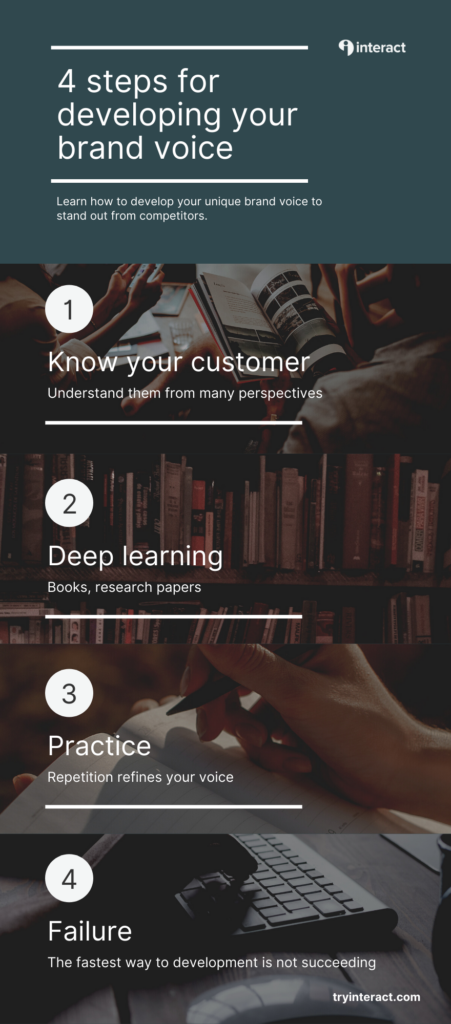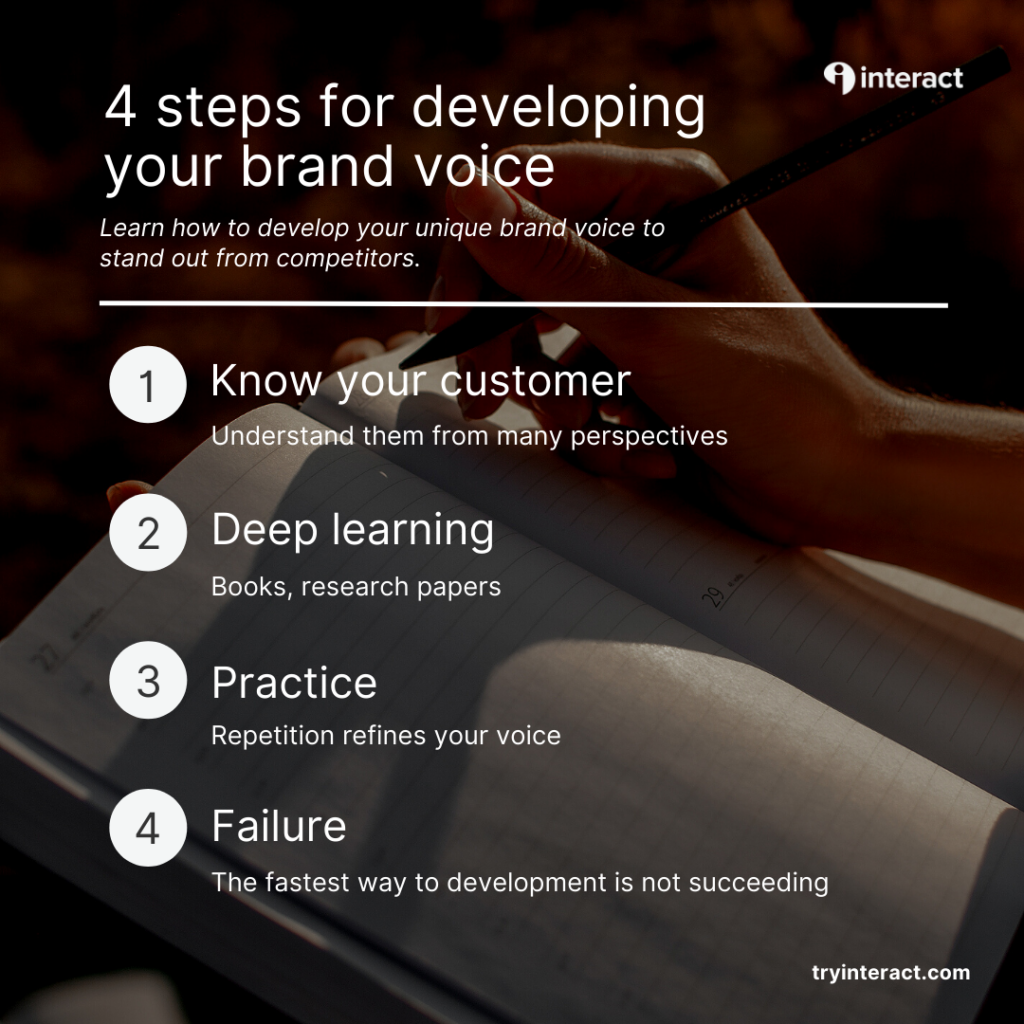The other day I read a piece in The Washington Post written by a marketing expert. I was struck by the precision of it: Each word was perfectly placed, flowing to create a cohesive narrative. Even though the article was about marketing frameworks, or something boring like that, I was totally drawn into it.
The most surprising part—being familiar with this expert’s content—was that their writing is usually very dry. Their content was stale, recycled, and frankly, not something you’d be excited about reading.
Something had changed. This writer had developed a strong brand voice over the last ten years. A brand voice is the “it” factor for a business. When you have it down, it’s obvious. It’s also obvious when you don’t have it down.
What is a brand voice?
A brand voice is the unique way you present the information you’ve acquired.
Why do I need to develop a brand voice?
If you want to stand out from the crowd and not just regurgitate the same exact advice everyone gives, you need a brand voice.
A brand voice is important because it makes content unique, and unique content gets more shares, backlinks, and traffic.
4 steps for developing your brand voice:
- Know your customer: Understand them from many perspectives
- Deep Learning: Books, research papers
- Practice: Repetition refines your voice
- Failure: The fastest way to development is not succeeding

Know your customer
It might seem like an odd place to start since we’re talking about your brand voice, but without knowing your customer, your brand voice will only exist in a bubble. Knowing your customer is essential in developing a brand voice because your customers can only receive information if it’s packaged the way they want it to be.
For example, if you are selling to people who love board games, and you know they all love watching The Lord of the Rings movies, you can reference those movies to illustrate your points. And that will help your customers understand what you’re saying.
However, if you use Lord of the Rings analogies and your customers have never seen those movies, you’re instantly ruining your credibility. Stories and examples give your writing flavor, but without knowing your customers, those stories can be off-base, and what would otherwise be great content can fall short of expectations.
Deep Learning
Your brand is the output, and it can only be as deep as the inputs fueling it. If you’re only reading other blogs or social media, your writing will have the depth of those blogs and social media. If you read books and ingest research, your brand content will develop a depth that stands out and brings in new information.
A great example of this is Ryan Holiday, multiple-time bestselling author. In his writing, he constantly references books and historical research/case studies, which gives his content both depth and credibility.
You hear highly successful people talk about reading all the time because reading gives them a depth of knowledge that, in turn, gives everything they create its own depth.
Practice
There are a few big reasons why practice matters. First, if you don’t put your content out regularly, no one will see it and you won’t get better. It’s quite easy to imagine yourself as a great writer/podcaster/video maker, or whatever your thing is. But it’s only when you put that content out in the world that people can tell you what they think of it.
This is the exact fear that keeps most people from ever producing anything; it also keeps them from developing. Those comments and feedback from people, even when they’re negative, are constructive toward helping you build your unique brand voice.
In the book Thanks for the Feedback, the author says every comment you get is helpful, even if those comments seem mean at first. Listen to what people say and process it with your own lens.
Failure
In an interview with Packy McCormick from Not Boring, he shared that one benefit of the way he writes is that it’s just him as he actually is. He doesn’t put on a persona to try and attract more customers or grow his brand; it’s just his writing.
After observing creators for more than ten years, I’ve learned that most people arrive at a place where they aren’t trying to play a role or “fake it till they make it.” The primary reason for that? People hit so many roadblocks and failures until they realize nothing is foolproof. No persona will prevent you from failing, so you might as well just be yourself.
Ironically, that’s the key to developing the strongest brand voice. Failing so many times that you give up and just show up as you are.
Conclusion:
A brand voice matters because unique content gets more traffic, shares, and backlinks. If you want to grow your brand, having a unique brand voice is the best way to do so. However, there’s no cheating the system when it comes to developing your brand voice, and from what we’ve seen in helping thousands of creators at Interact, successfully crafting your brand voice comes down to four simple steps.
- Know your customer: Understand them from many perspectives
- Deep Learning: Books, research papers
- Practice: Repetition refines your voice
- Failure: The fastest way to development is not succeeding

